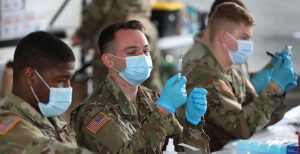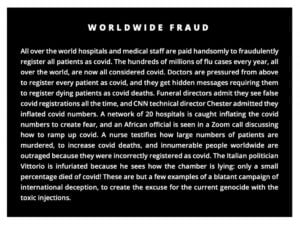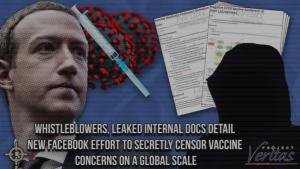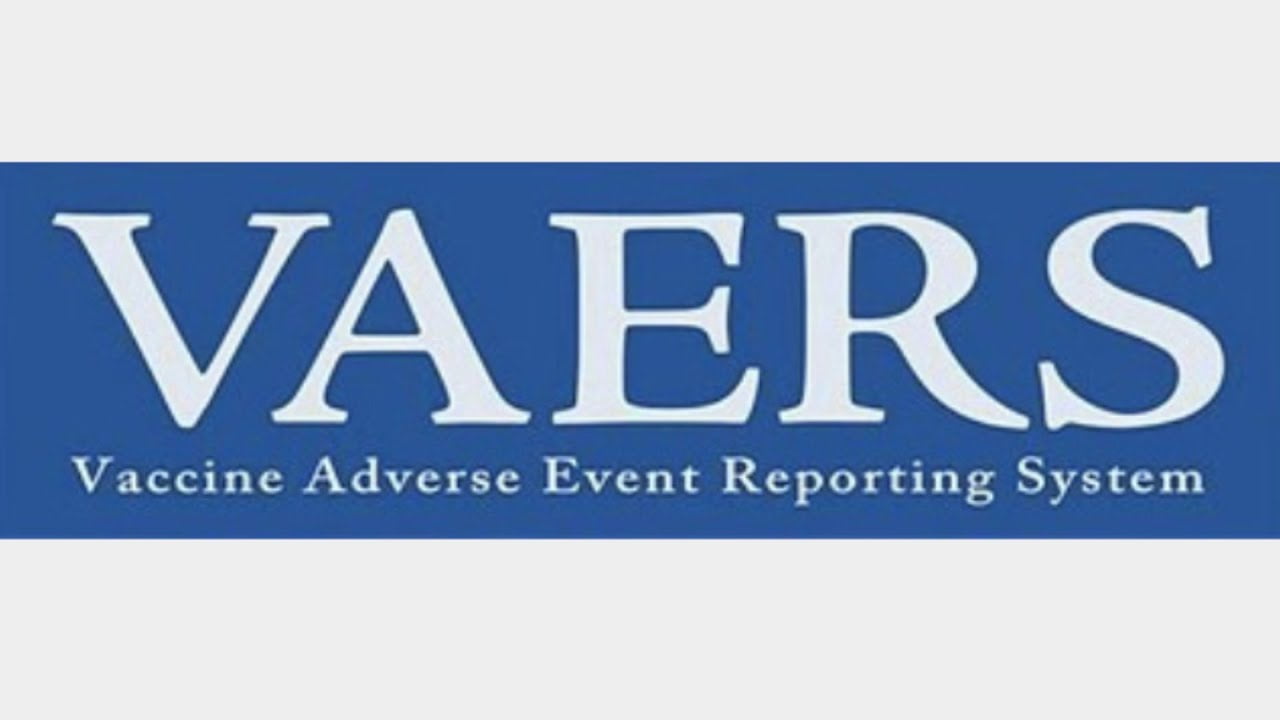(Vaccine Adverse Events Reporting System) For many years, the U.S. Department of Health and Human Services (HHS) has maintained a post-licensing surveillance system to track adverse effects and deaths from vaccines. Even government insiders like Surgeon General Dr. David Kessler acknowledged that VAERS is an abysmal failure. Nevertheless, it is only by clinging to this “designed to fail” system that regulators and industry have maintained their pretense that current vaccine risk profiles are acceptable. A 2010 study funded by HHS concluded that VAERS captured “fewer than 1% of injuries.” In other words, the actual injury rates from mandated vaccines are more than 100x what HHS has been telling the public!
The 2010 HHS study found that the true risk for serious adverse events was 26/1,000, or one in 37. Similarly, Merck’s clinical trials for Gardasil found that an astonishing half of all vaccine recipients suffered from adverse events, which Merck euphemistically called “new medical conditions,” and that 2.3% of vaccine recipients (1 in 43) suffered from autoimmune disease within six months of vaccination.
Similarly, a recent Italian study found that 46% of vaccine recipients (462 adverse events per 1,000 doses) suffered adverse events, with 11% of these rated “serious,” meaning 38 serious adverse events per 1,000 vaccinated individuals. These include grave gastrointestinal and “serious neurological disorders.” This amounts to a “serious” injury rate of 1/26.
Amazingly, a 2013 study found that nearly 30 percent of all health care professionals have never even heard of VAERS. This means that an even greater percentage of their patients have likely never heard of it, either. Among those who do know about VAERS and come across a potential adverse effect, a whopping 83 percent fail to ever report it.
A peer reviewed journal, Science, Public Health Policy, and The Law, published an article on vaccine adverse event reporting for human papilloma virus (HPV) vaccines in early May 2021. The article calls into question the integrity of VAERS.
From 1998-2020, the Centers for Disease Control and Prevention (CDC) failed to acknowledge “persistent or significant disability/incapacity” as a serious adverse event (SAE) in VAERS, even though the Code of Federal Regulations requires that it be categorized as “serious.” In a 2009 study on Merck’s HPV vaccine Gardasil, the U.S. Food and Drug Administration (FDA) and CDC determined the rate of SAEs to be 6.2%, which they concluded did not signal a safety problem.
The FDA and CDC officials excluded “a persistent or significant disability/incapacity” as “serious” despite federal regulations to the contrary. They appear to have left out thousands of disability and incapacity reports from teenagers and young adults after Gardasil vaccination. An independent assessment of SAEs based on the correct regulatory definition suggests that VAERS was off by almost 400%. The article explores the implications of this grossly inadequate reporting.
Empirical evidence suggests that the VAERS mis-categorization of “serious” events hid major safety problems with Gardasil and possibly with other vaccines.
“The failure of the VAERS system is profound,” said Robert F. Kennedy, Jr., Chair of Children’s Health Defense. “This article pinpoints the FDA and CDC’s dereliction of duty regarding Gardasil vaccines; its implications are enormous.” Lead authors Lucija Tomljenovic and Emily Tarsell agree new surveillance methods are critically needed and long overdue.
Obstacles include health professionals’ (and vaccine recipients’) inability to recognize (or even suspect) a possible relationship between a given vaccine and the adverse outcomes; the powerful disincentives for physicians to acknowledge or report vaccine injuries; uncertainty surrounding which adverse events ought to be reported; a medical “culture” that has not made adverse event reporting an “ingrained practice”; and logistics barriers such as cumbersome forms or clinical time constraints. Some of the provider uncertainty about VAERS reporting is likely related to HHS’s spartan Vaccine Injury Table. Notwithstanding the CDC’s addition of a large number of vaccines to the childhood and adult vaccine schedules since 1986 (following passage of the National Childhood Vaccine Injury Act), HHS has made almost no revisions to the table, largely limiting table injuries to a small number of acute reactions occurring within the first 48 hours post-vaccination. In contrast, pre-licensing trials and post-marketing reports have produced documentation (in vaccine package inserts) of nearly 400 different types of adverse events following vaccination.
Another important VAERS limitation is that the system does not routinely follow up on the reports it receives by contacting the reporting health professional, six to 12 months later, to determine if the individual fully recovered from the reaction or further deteriorated. Without this longitudinal information, neither the CDC nor doctors can have accurate or meaningful safety data on vaccines. The Vaccine Injury Table again illustrates the fallout; despite numerous published reports linking vaccines to a wide range of autoimmune conditions—and despite latency periods for autoimmune reactions known to range from weeks to years—the only autoimmune-like conditions listed in the table are chronic arthritis (in association with rubella-containing vaccines), thrombocytopenic purpura (measles-containing vaccines), and Guillain-Barré syndrome (seasonal influenza vaccines).
HHS has Ignored Numerous Opportunities to Strengthen VAERS
The 2010 AHRQ study—which analyzed several years of data (2006-2009) on 1.4 million doses of 45 different vaccines administered to over 376,000 individuals—found at least one adverse event (AE) for every 39 vaccines given, representing a shocking injury rate of approximately 2.6%. Before seeing these data, HHS had purposed to develop an effective “AI” or “machine counting” system to replace the “designed to fail” VAERS system; AHRQ tested its pilot AI system, called ESP-VAERS (Electronic Support for Public Health-Vaccine Adverse Event Reporting System), on the Harvard Pilgrim health maintenance organization (HMO). However, when CDC saw the alarming levels of vaccine injury exposed by AHRQ’s system, CDC killed the pilot study and refused to take phone calls from the AHRQ consultants. As discreetly stated in the final report, “Unfortunately, there was never an opportunity to perform system performance assessments because the necessary CDC contacts were no longer available and the CDC consultants responsible for receiving data were no longer responsive to our multiple requests to proceed with testing and evaluation.”
One of the AHRQ consultants, affiliated with both Harvard Pilgrim Health Care and Brigham and Women’s Hospital, went on to co-author a 2015 study that put ESP-VAERS to the test in a large health network in Ohio (a system with approximately one million patient encounters annually) between 2012 and 2013. The goal was “to facilitate automated AE detection and reporting” using electronic health records (EHRs), prospectively monitoring the records for “new diagnoses, changes in laboratory values and new allergies for up to 6 weeks following vaccinations” and sending messages to clinicians when the system flagged “suggestive events.” The system also automatically reported “high probability AEs following vaccination” to VAERS, even if the clinician chose to take no action. Over eight months and almost 92,000 vaccinations, the ESP-VAERS system generated from zero to eight alerts per clinician per month (mean=0.4) and captured adverse outcomes including seizures, rashes and other allergic reactions, Bell’s palsy, pleural effusion, lymphocytopenia, and hypothyroidism. At the study’s conclusion, the researchers reported that “The odds of a VAERS report submission during the pilot period were 30.2 . . . times greater than the odds during the comparable pre-pilot period.”
A similar “proof-of-concept” study focusing on use of EHR-based systems to automatically send electronic reports of adverse drug events to the FDA “in real time,” carried out at Brigham and Women’s Hospital in 2008-2009 and published in 2010, found that such systems are not only “efficient and acceptable to clinicians,” but can provide detailed clinical information and have “the potential to greatly increase the number and quality of spontaneous reports submitted to the FDA.” As an added bonus, the researchers found that it took clinicians, on average, 53 seconds to complete and submit the requisite form.
In 1990, an FDA-commissioned study in Rhode Island showed that even a simple intervention to educate physicians about reporting adverse drug reactions resulted in a 17-fold increase in submitted reports compared to the prior year, including significant increases in the number of severe reactions reported.
Referred to as a “passive” surveillance system, VAERS was never intended to track every instance of someone dying or becoming permanently injured from a vaccine. Instead, it relies entirely on voluntary reporting. The website CovidVaccineReactions.com does a better job of capturing injuries and deaths associated with Wuhan Flu shots, but even this resource is likely inadequate. However, the medical cabal made it difficult and put up resistance to reporting adverse events related to the Covid vaccine. Hospital physician’s assistant Deborah Conrad came forward with her testimony of the massive amount of COVID vaccine Adverse Events not being reported by hospitals. She recorded a call with her hospital’s president that reveals the shocking truth.
“Why on earth is the CDC still using a passive surveillance system proven completely worthless over a decade ago that anyone could see was bound to massively undercount potential side effects, as nothing has been done to ensure public awareness of such a reporting system in the first place?” asks Dr. Michael Thau, Ph.D., writing for Revolver.
“And, unfortunately, the only answer seems to be that, for whatever dark reason, that’s exactly what the CDC wants … And not just because they’ve made no effort to publicize VAERS and increase the dismal reporting rate among medical professionals nor replaced it with something better.”
Relying on VAERS underreporting, among other factors, public health officials continue to make the improbable argument that “bona fide vaccine injuries are rare.”
Why Did the CDC Silence the Million Dollar Harvard Project Charged With Upgrading Our Vaccine Safety Surveillance System?
There are major problems with the vaccine adverse event reporting system (known as VAERS) which the CDC considers the “front line” of vaccine safety. VAERS was created in 1990 by the CDC and FDA as a means to collect and analyze adverse effects that are associated with vaccines. Unfortunately, the failings of VAERS are “kept from the consciousness” not only of the public, but also from the doctors, pediatricians, and nurses that the public rely on to provide reliable information as to the safety of vaccines. I say “kept from the consciousness” rather than “kept secret” because while these failings are publicly disclosed for all the world to see, they are for all intents and purposes BURIED in documents seldom searched out by the average member of the medical community, much less by the average individual. You could say that the information has been very effectively hidden in plain sight.
By far, the most dire failure of the VAERS system is the vast underreporting of vaccine adverse effects which leads to a dangerous false security in vaccine safety and an erroneous assumption that the benefits of vaccination far outweigh the risks.
Who DOES know about the deadly elephant in the room?
The CDC, the FDA, the Institutes of Medicine (IOM), and Congress to name a few. Oh, and an organization called Harvard Pilgrim Healthcare, Inc.- but we’ll get to them in a minute.
This is what the CDC says about the VAERS system, “Passive surveillance systems (e.g. VAERS) are subject to multiple limitations, including underreporting, reporting of temporal associations or unconfirmed diagnoses, and lack of denominator data and unbiased comparison groups. Because of these limitations, determining causal associations between vaccines and adverse events from VAERS reports is usually not possible.” (emphasis mine)
In 2000, the 6th Report by the Committee on Government Reform addressed the failings of VAERS in its address of the Vaccine Injury Compensation Program. The report states, “The quality of VAERS data has been questioned. Because reports are submitted from a variety of sources, some inexperienced in completing data forms for medical studies, many reports omit important data and contain obvious errors. Assessment is further complicated by the administration of multiple vaccines at the same time, following currently recommended vaccine schedules, because there may be no conclusive way to determine which vaccine or combination of vaccines caused the specific adverse event.”
The same Congressional report notes (on page 15), “Former FDA commissioner David A. Kessler has estimated that VAERS reports currently represent only a fraction of the serious adverse events.” (emphasis mine)
The Congressional report above listed 4 limitations that the IOM Committees noted, “1) Inadequate understanding of biologic mechanisms underlying adverse events; 2) Insufficient or inconsistent information from case reports and case series; 3) Inadequate size or length of follow- up of many population- based epidemiological studies; 4) Limitations of existing surveillance systems to provide persuasive evidence of causation; and 5) Few published epidemiological studies.” The report continues by noting that the “IOM warned that ‘if research capacity and accomplishments [are] not improved, future reviews of vaccine safety [will be] similarly handicapped.’”
The IOM has been telling the CDC for over 23 years that they have inadequate information (and none at all in some cases) to advise on the causal relationship between vaccines and adverse events for a majority of adverse events reported. In a 1994 report on vaccines and adverse events the IOM stated, “The lack of adequate data regarding many of the adverse events under study was of major concern to the committee…Although the committee was not charged with proposing specific research investigations, in the course of its review additional obvious needs for research and surveillance were identified, and those are briefly described here.” (emphasis mine) In 2011, the IOM conducted another study examining the scientific evidence in studies available for 158 vaccine adverse effects. Again, they concluded that they had inadequate information to come to a decision, “The vast majority of causality conclusions in the report are the evidence was inadequate to accept or reject a causal relationship.” (emphasis mine)
While one might expect a new program (new in 1990) to have a few bugs that need to be worked out, I would expect that when it comes to being able to ascertain vaccine safety, working out those bugs should be priority number one. Certainly today in 2017, a whopping 27 years later, the failure of the CDC to address this monumental danger to public health should be viewed with a skepticism much greater than mere suspicion.
That leads us to the interesting case of the CDC and Harvard Pilgrim Healthcare Inc.
The Department of Health and Human Services (HHS) gave Harvard Medical School a $1 million dollar grant to track VAERS reporting at Harvard Pilgrim Healthcare for 3 years and to create an automated reporting system which would revolutionize the VAERS reporting system- transforming it from “passive” to “active.”
This project was called Electronic Support for Public Heath- Vaccine Adverse Reporting System (ESP:VAERS). According to the grant final report, the scope of the project was, “To create a generalizable system to facilitate detection and clinician reporting of vaccine adverse events, in order to improve the safety of national vaccination programs.” To accomplish this the team used the electronic medical records at Harvard Pilgrim Healthcare, Inc, which is described as a “large multi-specialty practice.” Every patient that received a vaccine was automatically identified and followed for 30 days. Within that 30 days the individual’s diagnostic health codes, lab tests, and prescriptions were evaluated to recognize any potential adverse event. Another goal of the project was to evaluate the performance of the new automated system via a randomized trial and to compare this new data to the existing data collected by VAERS and Vaccine Safety Datalink.
Just the preliminary description of this program is head and shoulders above the current functioning of the passive VAERS system. In our current system, adverse events are to be spontaneously reported by parents or health care providers. Most parents aren’t even aware the VAERS system exists, much less aware that they are supposed to be reporting to it. Health care providers are “supposed” to report adverse events, but we have no idea of the efficiency level with which this is occurring, and more than a hunch that this reporting is grossly neglected for a variety of reasons. Furthermore, many vaccine adverse events are never reported because either the parent, patient, or doctor is completely unaware that a subsequent adverse event is in fact due to a vaccine. This new reporting system would remove all of these failures from the equation.
What were the results?
Data was collected from June 2006 to October of 2009 on a total of 715,000 patients. Of those 715,000 patients, 376,452 were given 1.4 million doses of 45 different vaccines. A total of 35,570 possible adverse reactions were identified, so 2.6% of vaccinations were followed by a possible adverse reaction.
Let’s just take a minute to reflect on that last sentence. Out of only 376,452 individuals that received a vaccine at this Harvard practice, the new automated system identified 35,570 possible adverse reactions in a three year period. How does that stack up to the number of adverse effects reported to VAERS? According to the CDC, only 30,000 adverse events are reported every year for the entire US population. This finding alone should have had the CDC saying: “Houston, we have a problem!”
I’ll quote the findings directly from the report, “Adverse events from drugs and vaccines are common, but underreported. […] Likewise, fewer than 1% of vaccine adverse events are reported. Low reporting rates preclude or slow the identification of ‘problem’ drugs and vaccines that endanger public health. New surveillance methods for drug and vaccine adverse effects are needed.”
Again, let’s stop and think about this revelation for a moment: fewer than 1% of vaccine adverse events are reported. The CDC’s entire vaccination propaganda campaign rests on their claim that side effects from vaccination are exceedingly rare (and predominantly minor). According to the CDC, in 2016 alone, VAERS received 59,117 vaccine adverse event reports. Among those reports were 432 deaths, 1,091 permanent disabilities, 4,132 hospitalizations, and 10,274 emergency room visits. What if these numbers actually represent less than 1% of the total as this report asserts? Simple multiplication would yield vaccine adverse events reports numbering 5,911,700!
Of course, at this point that figure is nothing but a guess. But, again, why do we HAVE To guess? Because in 27 years the CDC has failed to provide a post- licensure vaccine safety surveillance system that the IOM, FDA, physicians, and the public can have confidence in.
The report also states, “Barriers to reporting include a lack of clinician awareness, uncertainty about when and what to report, as well as the burdens of reporting: reporting is not part of the clinician’s usual workflow, takes time, and is duplicative.
So, WHY aren’t the reports currently being made to VAERS? According to the findings above, clinicians don’t know for sure what a vaccine adverse event is. This isn’t surprising at all considering what we learned from the 2011 IOM report above. There haven’t been enough studies performed for highly trained IOM scientists and physicians to even determine whether or not the majority of the currently suspected 158 adverse vaccine effects are indeed caused by vaccines. How could we possibly expect our average pediatricians or general practitioners to know what a team of IOM personnel have determined we have inadequate information to decide? In addition, this report basically finds that your clinician frankly doesn’t have the time to devote to proper VAERS reporting under the current inconvenient system.
You’d think that the CDC would be jumping for joy that this Harvard team just created a proactive, reliable, automated system that would improve the quality of our vaccination program by improving vaccine adverse event detection thereby increasing public confidence in post- licensure surveillance.
What was the CDC’s response?
Basically, the same response your average college student falls back on when they decide they are no longer interested in continuing a relationship- they cut all lines of communication. No more answering phone calls or emails. You heard me correctly, the United States of America Centers for Disease Control ghosted Harvard Pilgrim Healthcare, Inc. For those who are unaware, Google dictionary defines ghosting as, “the practice of ending a personal relationship by suddenly and without explanation withdrawing from all communication.” Personally, I would hope that I could hold an organization like the CDC to a higher standard, but…
After a one million dollar grant was paid and three years of research conducted on what appeared to be a very successful upgrade to the passive VAERS system, the team’s CDC contacts went MIA. The ESP:VAERS final report states, “Unfortunately, there was never an opportunity to perform system performance assessments because the necessary CDC contacts were no longer available and the CDC consultants responsible for receiving data were no longer responsive to our multiple requests to proceed with testing and evaluation.”
According to the final report, the only thing left for the CDC to do was link the VAERS system to the Harvard Pilgrim system in order to transmit the data. The team requested that the CDC do this, “However, real data transmissions of non-physician approved reports to the CDC was unable to commence, as by the end of this project, the CDC had yet to respond to multiple requests to partner for this activity.”
What do we, the public, take away from this debacle?
As I see it there are only two options.
- You give the CDC the benefit of the doubt, assume deep down they have the safety of the public at heart and chalk up their monumental waste of money, time, and a good idea to bureaucratic incompetence.
- You stop naively believing that the CDC cares ultimately about public safety and realize that the vaccine industry makes way too much money to allow public confidence in the safety of vaccines to be eroded by a surveillance system capable of giving the public a glimpse of the scope and magnitude of the adverse effects vaccines are actually responsible for.
To assist you in your decision making, I’ll leave you with a statistic from the ICAN (Informed Consent Action Network) request to the HHS to meet the obligations set forth by the 1986 National Childhood Vaccine Safety Act regarding the CDC’s role in the vaccine industry market, “When the CDC recommends a pediatric vaccine for universal use, it creates for that vaccine’s maker a liability free market of 78 million children typically required by law to receive the vaccine.” (emphasis mine)
Sources:
- childrenshealthdefense.org
- DCclothsline
- PRnewswire
- https://childrenshealthdefense.org/defender/rfk-jr-david-kessler-covid-vaccine-vaers/
- https://truthsnitch.com/2017/10/24/cdc-silence-million-dollar-harvard-project-charged-upgrading-vaccine-safety-surveillance-system/
Chronological History of Events Related to VAERS

Whistleblower: The Pentagon Mandated COVID Vaccines, But Then Ignored Concerns About Adverse

Report: FDA, NIH Data Shows 3000% Increase In Brain Injuries After COVID Jabs

Columbia Study: True U.S. COVID Vaccine Death Count is 400,000 thru Dec 3rd

Senator Johnson holds Expert Panel on Vaccine Injuries

Censored: Paper Proving That COVID-19 Vaccines Cause Myocarditis Disappears

The Vaccine Death Report: Evidence of millions of deaths and serious adverse events from Covid Vax

FDA Vaccine Advisory Committee Hears Damning Whistleblower Testimony On COVID Vaccines

Study: Estimating the number of COVID vaccine deaths in America

VAERS Data Analyst Exposes VAERS Cover Up and HUGE Number Of COVID Vax Injuries/Deaths!





